RIYADH: The Boulevard World zone is among the largest zones of the fourth Riyadh Season, encompassing a wide range of international entertainment experiences. This year, having expanded by over 40 percent, it makes a comeback with a wintry ambiance, embodying the essence of the ancient Levant and showcasing its rich history through iconic structures.
In Boulevard World, cultural diversity is valued and embraced, with each country taking pride in its own distinct heritage.
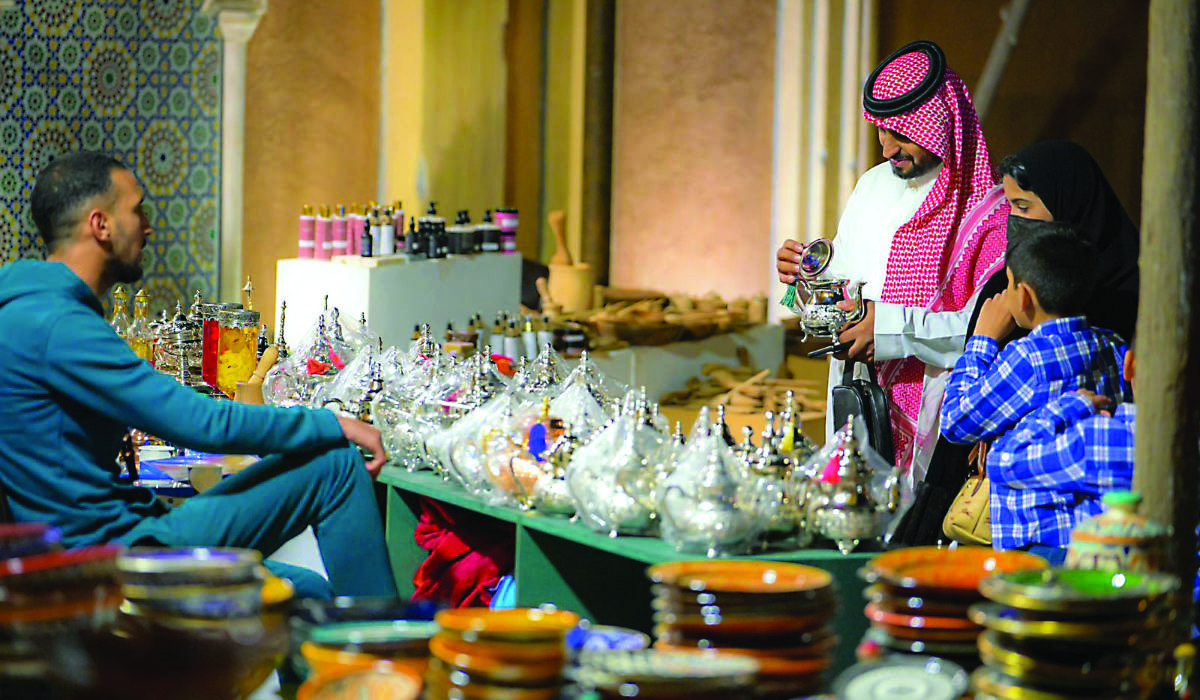
Visitors can explore a variety of cultural products including rugs from Iran, argan oil from Morocco and teas from China. (AN photo by Rahaf Jambi)
From traditional cuisine and clothing to music and dance forms, the preservation of cultural traditions allows people to connect with their roots and give a sense of identity. It fosters a deep appreciation and understanding of different cultures, promoting tolerance and respect.
By cherishing and upholding these customs, Boulevard World exemplifies a rich tapestry of traditions that adds vibrancy and color to the community.
HIGHLIGHT
Saudi brand Arom Al-Shay is local gem in the heart of the Chinese pavilion at Boulevard World, offering visitors authentic Chinese tea flavors.
At the Boulevard World pavilions, various countries showcase their most significant cultural aspects, including Morocco, China, Palestine, Turkiye, and Iran.
These cultural traditions are evident in the various festivals, rituals, and practices passed down from generation to generation.
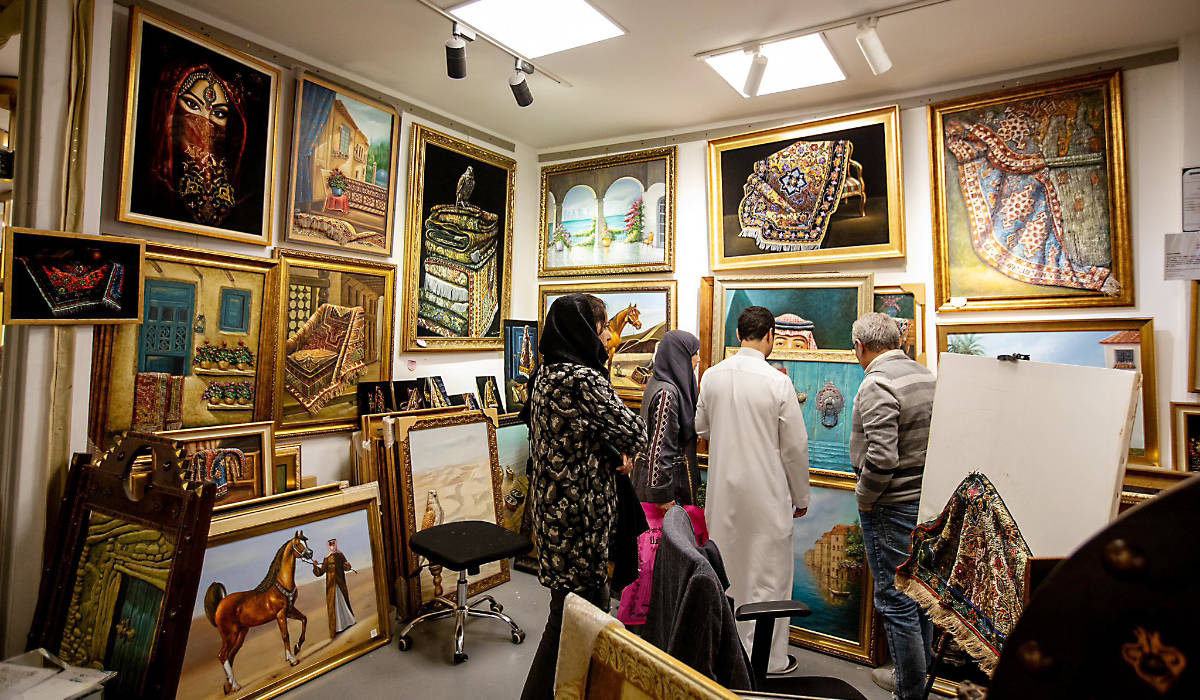
Visitors can explore a variety of cultural products including rugs from Iran, argan oil from Morocco and teas from China. (AN photo by Rahaf Jambi)
Tea, for example, is significant in Chinese culture, encompassing daily life, tradition, and social interactions. Its importance can be traced back thousands of years, with tea ceremonies centralizing ancient Chinese customs. This beverage is revered for its medicinal properties, soothing effects, and ability to promote mental clarity.
A local gem lies in the heart of the Chinese pavilion at Boulevard World. Saudi brand Arom Al-Shay (Tea Origin) offers visitors authentic Chinese tea flavors.
Maram Khaled, who tends to the visitors at the booth, showcased four popular Chinese tea options that Arom Al-Shay provides.
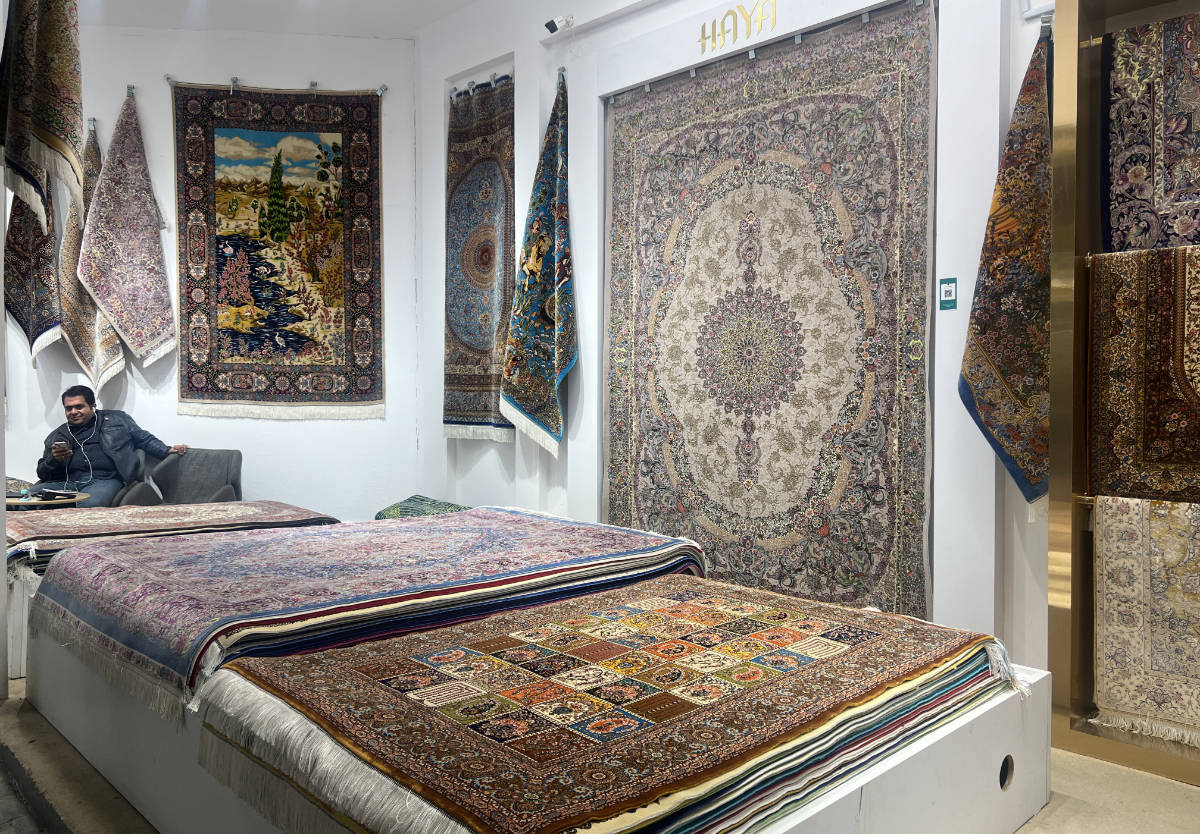
Visitors can explore a variety of cultural products including rugs from Iran, argan oil from Morocco and teas from China. (AN photo by Rahaf Jambi)
Khaled told Arab News: “Jasmine pearls undergo plucking and hand rolling before being infused with Jasmine flowers. Jasmine pearls are unlike Jasmine flower tea which consists of green or black tea leaves.”
She also explained that the shop offers oolong tea, which is yellow, unlike green or red tea. Its antioxidants are medium and the tea is less bitter than others: “The infusion of vanilla enhances the oolong’s inherent natural sweetness, creating a symphony of flavors. The tea is also more caffeinated than others and aids in weight loss.”
The shop’s third kind is smoked tea, their best-selling flavor. “It mixes Chinese and Ceylon tea leaves smoked on pine wood fire, resulting in a noticeable smoky scent,” said Khaled.
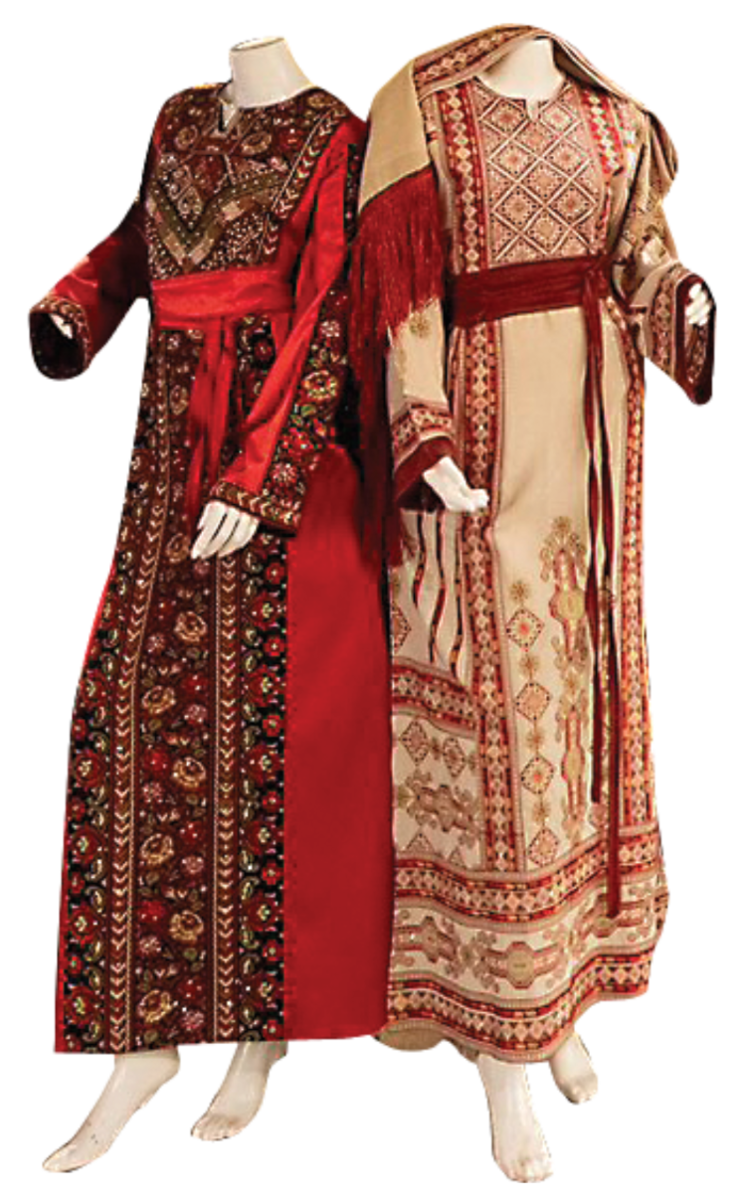
In Boulevard World, cultural diversity is valued and embraced, with each country taking pride in its own distinct heritage. (Boulevard World)
At the Morocco pavilion, visitors can learn about the significance of natural skincare in Moroccan culture.
Safa’a at the Morocco pavilion told Arab News about traditional Moroccan beauty rituals and products that have been enriched with natural ingredients that nourish and heal the skin for centuries.
Argan oil, known as "liquid gold," is one of the key ingredients used in skincare rituals due to its high vitamin E and antioxidants content.
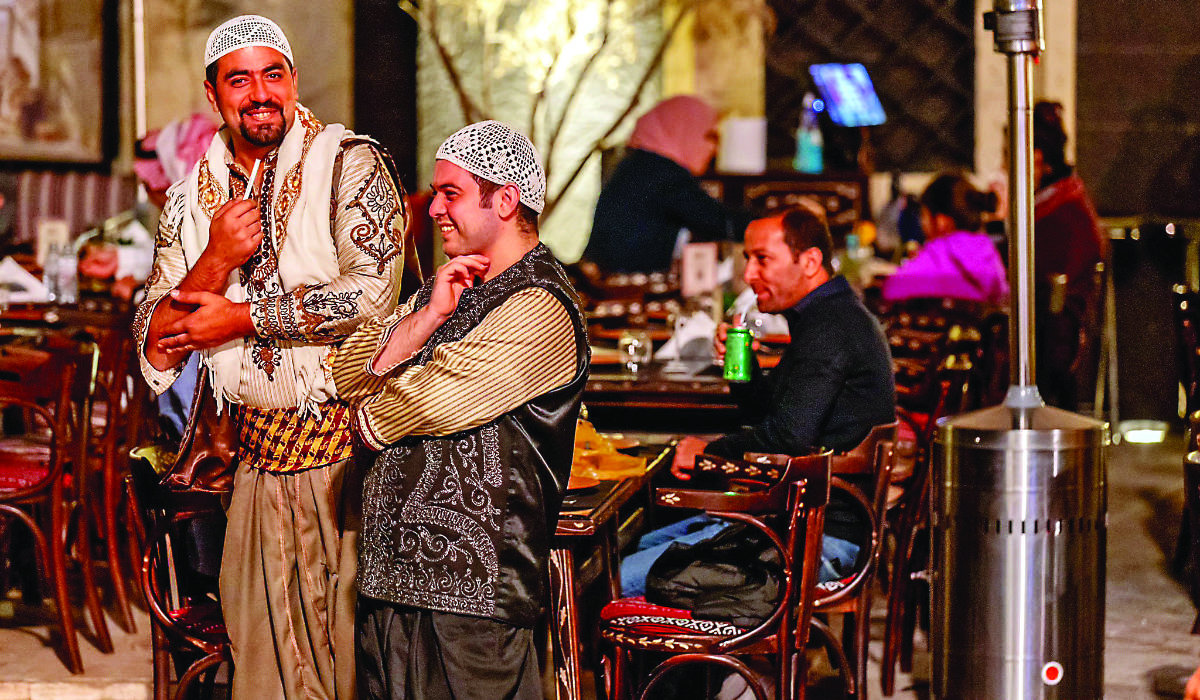
In Boulevard World, cultural diversity is valued and embraced, with each country taking pride in its own distinct heritage. (Boulevard World)
“In Morocco, we opt for naturally made soaps and rarely use commercial shower gels. Most of our products are infused with argan oil which is exclusive to Morocco,” she explained.
Additionally, other natural ingredients like rose water, ghassoul clay, and prickly pear oil are also widely used in Moroccan skincare.
“These natural products not only provide effective results but also have minimal environmental impact, emphasizing the sustainable and eco-friendly approach of Moroccan skincare,” Safa’a explained.
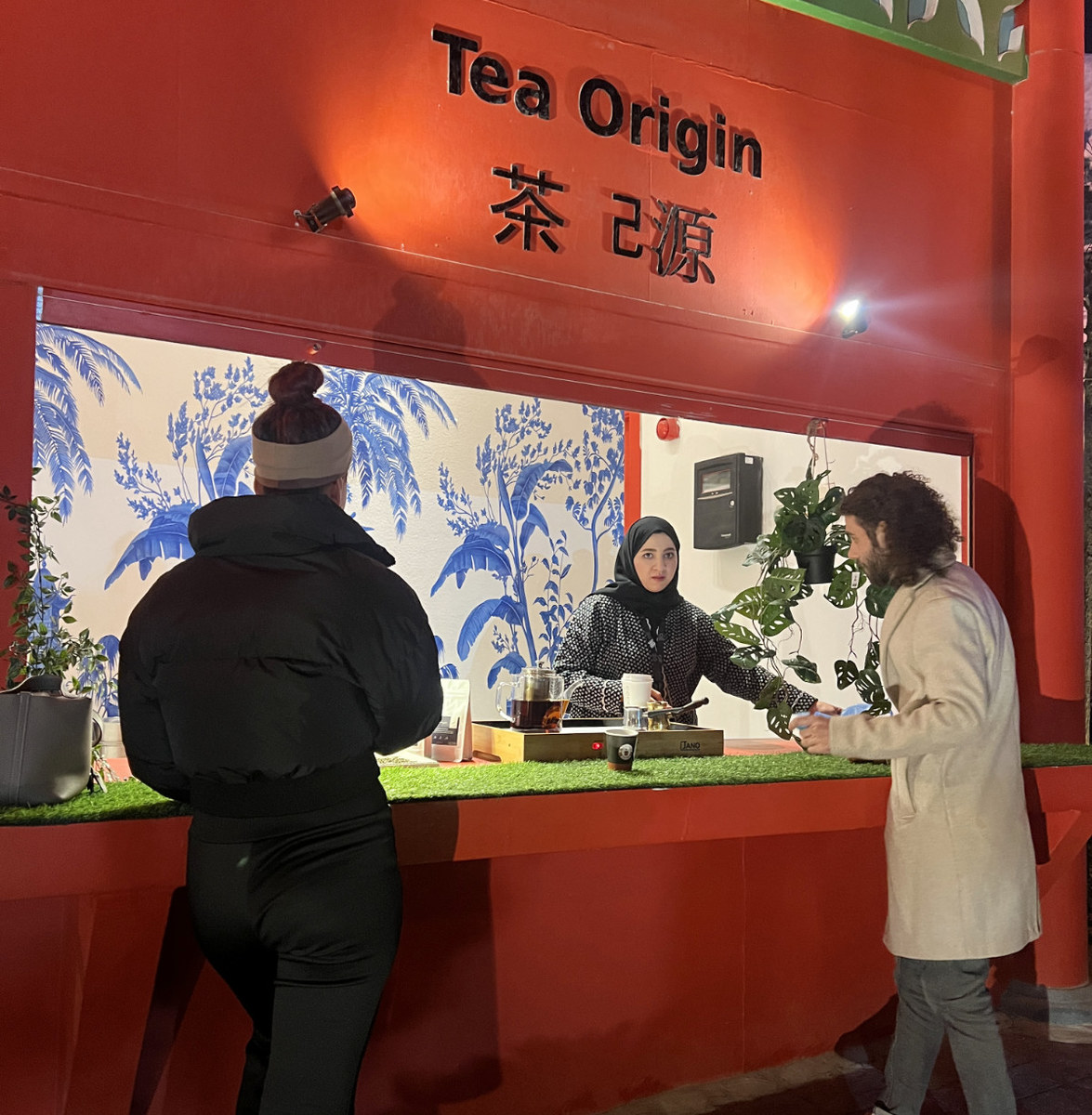
Tea is significant in Chinese culture, encompassing daily life, tradition, and social interactions. (AN photo by Rahaf Jambi)
One of the newest locations this season is the Turkish pavilion where guests can explore apparel, accessories, pastries, and more. The traditional Turkish chestnut offered to visitors at the doors will give them the impression that they are truly exploring the stunning metropolis of Istanbul.
Sultanahmet Sweets, a Turkish sweet shop that sells mouth-melting Turkish delicacies — with the option of a diet section produced with artificial sugar — is one of the loveliest stores to open up in the Turkish area.
Bashar Al-Ayouf, a sales representative for the shop, is a Syrian citizen who lives in Istanbul, where the store was created by ambitious young Syrians who are now participating in many exhibits across the world.
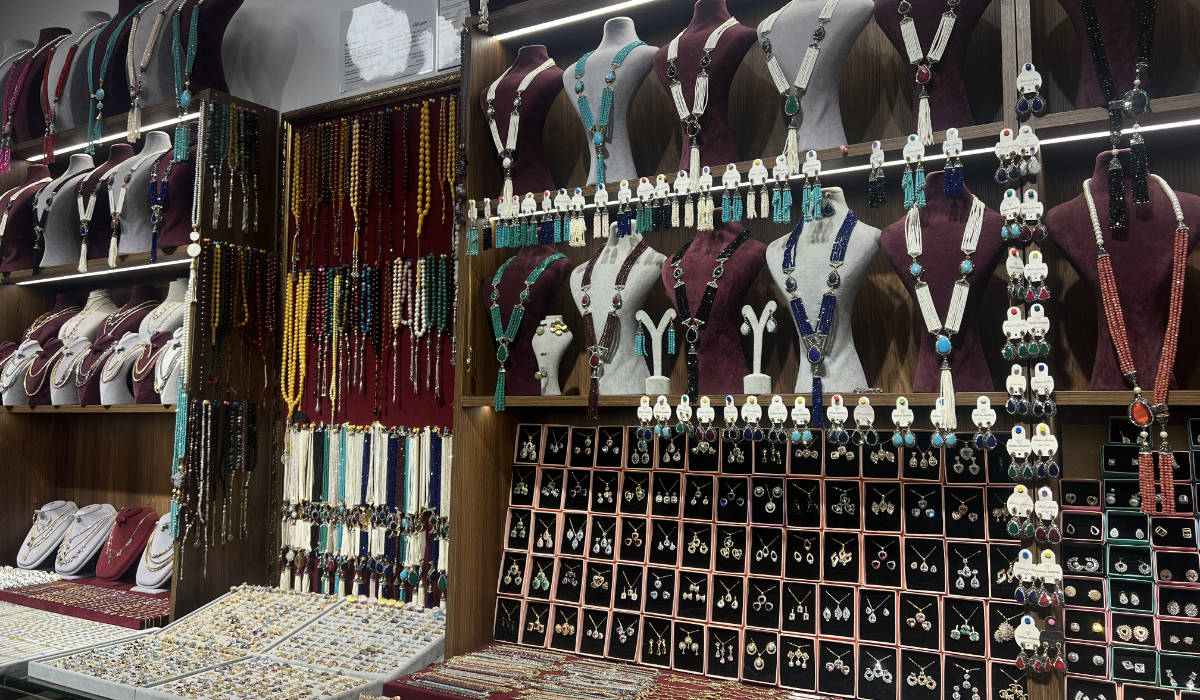
The Turkish pavilion also featured exquisite, handcrafted jewelry with excellent finishing and a variety of fantastic Turkish patterns in a shop named Rose Stone, which specializes in producing jewelry. (AN photo by Rahaf Jambi)
“For the first time, we are offering chocolate and sweets here in Saudi Arabia. We have opened multiple stores in the Syrian and Turkish zones, and our best-selling item is the pomegranate delight sweet, which is made of pistachios and pomegranate and is always sold out. I have noticed that the people here love pomegranates,” Al-Ayouf said.
The Turkish pavilion also featured exquisite, handcrafted jewelry with excellent finishing and a variety of fantastic Turkish patterns in a shop named Rose Stone.
When entering the Iranian pavilion, guests are welcomed by the sight of saffron tea, which is available at the Novin Saffron shop. Saffron is the most costly and sought-after herb in the world, and it is well-known in Iranian culture.
Hassan Khalid, who arrived in the Kingdom as a representative of Novin Saffron, said: “We have three different varieties of saffron here to suit every taste, and the prices vary based on the quality. We have been doing exhibits for 13 years, but this is our first time in Riyadh.”
Naturally, the Iranian pavilion would not be complete without an area dedicated to rugs. Visitors can view and feel the rugs in person and place an order for delivery from the Iranian Carpet store.





































